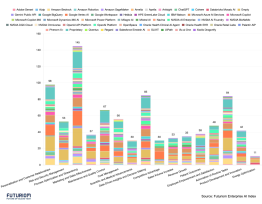Can the USA Save Intel?

Can a $11 billion infusion save Intel’s bacon?
That’s the question raised by news that the U.S. Government is investing $8.9 billion to purchase a 9.9% stake in the company, on top of $2 billion contributed by SoftBank. And so far it looks like a crapshoot.
According to the latest announcement, the Trump administration will buy 433.3 million shares of Intel common stock at $20.47 per share. The government won’t, however, hold any board seats and has agreed to vote for any decisions made by the board “with [unspecified] limited exceptions.”
The government also has taken a five-year warrant to purchase an additional 5% of Intel shares at $20 per share If Intel should cease to own 51% of its foundry business. That hedges the government’s bet by ensuring that Intel’s manufacturing facilities won’t fall under foreign control.
The Trump administration plans to fund its stake in Intel via a $5.7 billion award from the U.S. CHIPS and Science Act that was already earmarked for Intel but not released yet (Intel’s already received $2.2 billion in CHIPS money). The remaining $3.2 billion comes from the U.S. Secure Enclave Program, part of the CHIPS Act that invests in U.S. chipmaking geared to national security—a nod to Intel’s understood commitment to supply chips to the U.S. Department of Defense.
Can the Government Salvage Intel’s Foundry Services?
The new investments are clearly aimed at Intel’s Foundry Services business, which was expanded by ex-CEO Pat Gelsinger in an effort to extend the company’s chip manufacturing to external customers.
It didn’t work. After sinking billions into the project and working with AWS and Microsoft, Intel was unable to sustain sufficient customer interest to fuel its ambitions to challenge TSMC and Samsung. Rumor had it that Broadcom, a would-be anchor customer, wasn’t pleased with the company’s efforts to produce chips using its new 18A manufacturing process. Gelsinger was fired by the board for failing to turn around a sinking ship.
Ironically, it’s that foundry business that’s captivated the ambitions of SoftBank and the U.S. Government. So far, Intel has devoted $100 billion to build out manufacturing facilities throughout the U.S., and it boasts that its Chandler, Arizona, plant will start high-volume production later in 2025.
At issue is whether more money can fix a few fundamental problems Intel has with manufacturing.
Intel’s 18A Process Challenge
The Chandler, Arizona, plant will run on Intel’s 18A process, which isn’t as fast or efficient as its newer 14A manufacturing process. Tests of 14A have reportedly sparked interest from Apple and NVIDIA, spurring investors to hope that Intel can get its 14A act together sufficiently to attract customers of that ilk to its foundry business.
That remains a question. Reports indicate that the company’s had problems with yield in its own x86 line using 18A. This means that the percentage of fully functional chips made from one silicon wafer is too low. To build trust in 18A and potentially 14A, Intel must improve its yield.
On the last earnings call July 24, CEO Lip-Bu Tan said 18A will remain the company’s focus for at least the next three generations of Intel chips and that Intel has taken a new tack in working aggressively with customers to figure out how to improve chip yield. Results have been good, he said, and the company is on track to begin initial manufacturing this year of its Panther Lake chip, which is designed for AI-based notebook and laptop computers.
But the Intel chief was also clear that he won’t be sinking capex into 14A until he sees external customer interest. And that requires trust in 18A. Whether the company can fix its current manufacturing problems sufficiently to inspire trust in its next generation remains a question.
That said, Intel had significant verbal backing for its announcement of the U.S. funds from the CEOs of Microsoft, Dell, HP, and AWS—all companies that have fallen into line with President Trump’s ambitious plan to broaden tech manufacturing on U.S. soil. If their sworn support translates to commitments for foundry services that work as hoped, that could turn around Intel’s fortunes.
On the other hand, if Intel fails to produce results with 18A, even companies supporting Trump’s agenda won’t consider hooking their wagons to Intel’s star, particularly if TSMC continues its push into U.S. facilities. The clock is ticking.
Futuriom Take: The Trump administration’s $8.9 billion equity stake in Intel sends a strong message to U.S. companies that it would be in their interest to support the company's foundry services. Whether Intel can rise to the challenge remains a question.




















